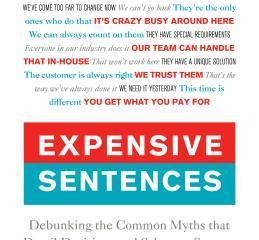If you’re shopping for a home right now, you’ve likely noticed more listings with price reductions. It’s a noticeable shift, and one that leaves many buyers wondering: Does a price reduction signal a red flag, or could it be a hidden opportunity?
In this market, price reductions are becoming more common and more strategic. For buyers who understand how to evaluate them, these changes can unlock real advantages.
WHY PRICES ARE BEING REDUCED MORE OFTEN
The housing market has cooled from the frenzy of the past few years. Higher interest rates and growing inventory mean buyers have more choices and are taking more time to decide. As a result, sellers can no longer rely on aggressive pricing to draw offers immediately.
Many homes today are initially priced too high, based on outdated expectations of rapid appreciation. Sellers are learning that to stay competitive, they have to adjust. These reductions often reflect a response to market feedback, like fewer showings or stalled interest, rather than issues with the property itself.
This is especially common in the first-time homebuyer price range, where even a small drop — say, from $400,000 to $375,000 — can mean the difference between no activity and multiple offers. Buyers in this bracket tend to have hard caps based on monthly payment limits, so pricing strategy is critical.
HOW TO TELL IF A PRICE REDUCTION SIGNALS VALUE
Not all reductions are created equal. A well-positioned price cut brings the home in line with current market data, typically just below similar active listings or recent pending sales. This is often referred to as a strategic correction, not a sign of desperation.
Instead of focusing solely on closed sales, buyers should compare the new list price against pending homes in the same area. These pending deals are a more accurate reflection of today’s buyer behavior.
It’s also smart to watch the home’s price history and days on market. A home that’s been sitting longer than others may indicate a seller who’s more open to negotiating on price, terms or even repairs.
DON’T LET HIGH DAYS ON MARKET SCARE YOU AWAY
A common myth is that a home sitting on the market for 60 days or more must have serious issues. In reality, it’s often a case of early overpricing or poor timing. Once the seller makes the right pricing adjustment, that same home might suddenly offer strong value.
Listings with longer market times can give buyers more leverage: more room for negotiation, less competition and time to make a thoughtful, pressure-free decision.
WHY TIMING AND PRICE REDUCTIONS GO HAND IN HAND
Once a home hits the market, it’s a good idea for sellers to live with the list price for about two weeks and gather feedback. If showings are slow or buyer interest isn’t strong, a midweek price reduction can be a smart move. Reducing on a Wednesday, for example, means the listing will show up in Thursday’s “hot sheet” for agents and buyers preparing for weekend tours.
Every price change renews attention, placing the home back on alert systems and increasing visibility. An aggressive, well-timed reduction can even spark multiple offers if it brings the price into a sweet spot for buyers.
UNDERSTANDING THE DIFFERENCE: TRUE REDUCTION OR A STILL-OVERPRICED HOME
Some listings are reduced but remain overpriced. This often happens when a seller starts far above market value and reduces in small increments. Even after a price cut, these homes may still lag behind similar inventory in both price and features.
By contrast, a strategic reduction brings the home into a competitive range quickly, often just below recent comps or competing listings. These are the reductions that tend to generate renewed interest and strong buyer engagement.
HOW BUYERS CAN USE THIS MARKET TO THEIR ADVANTAGE
Price-reduced homes represent an opportunity, not a risk, when approached strategically. With the right mindset and guidance, buyers can use these shifts to find value, avoid competition and negotiate favorable terms.
The key is staying informed and working with an agent who tracks real-time data, not just historical sales. In today’s market, that insight can be the difference between overpaying and landing a great deal.
Price reductions are not red flags, they’re signals. They reflect how the market is moving and offer buyers leverage and opportunity. By staying active in your search and open to revisiting homes that have dropped in price, you position yourself to move quickly when the timing and price are right.
In a slower, more balanced market, smart buyers who follow the data, not the fear, are the ones who come out ahead.
Las Vegas native Ryan Melvin is a seasoned agent with huntington & ellis, A Real Estate Agency. With more than two decades of experience, Melvin combines deep market knowledge with a passion for helping clients build wealth through real estate. Known for his integrity and strategic insight, he stays ahead of industry trends while keeping a sharp focus on fundamentals.








